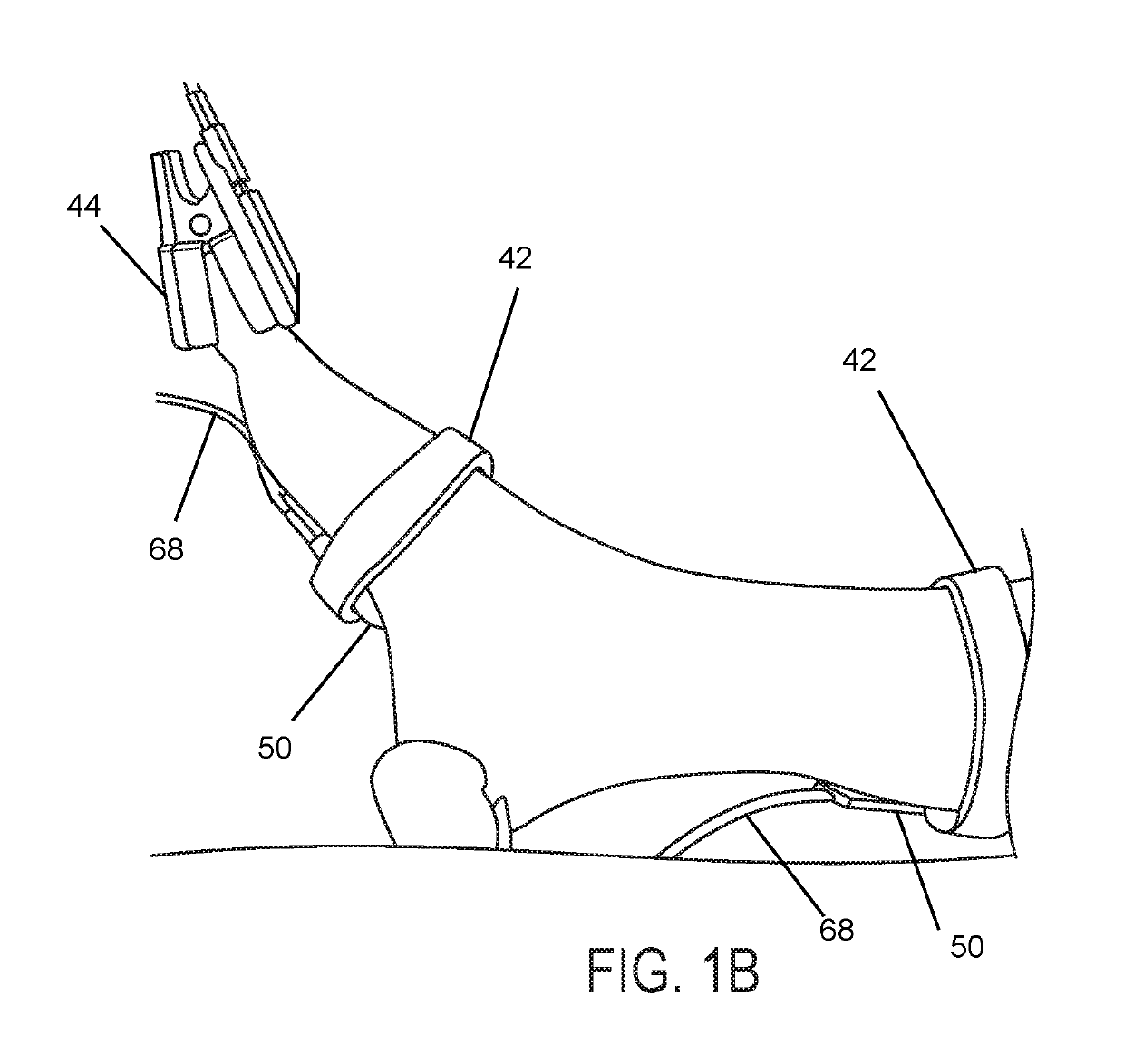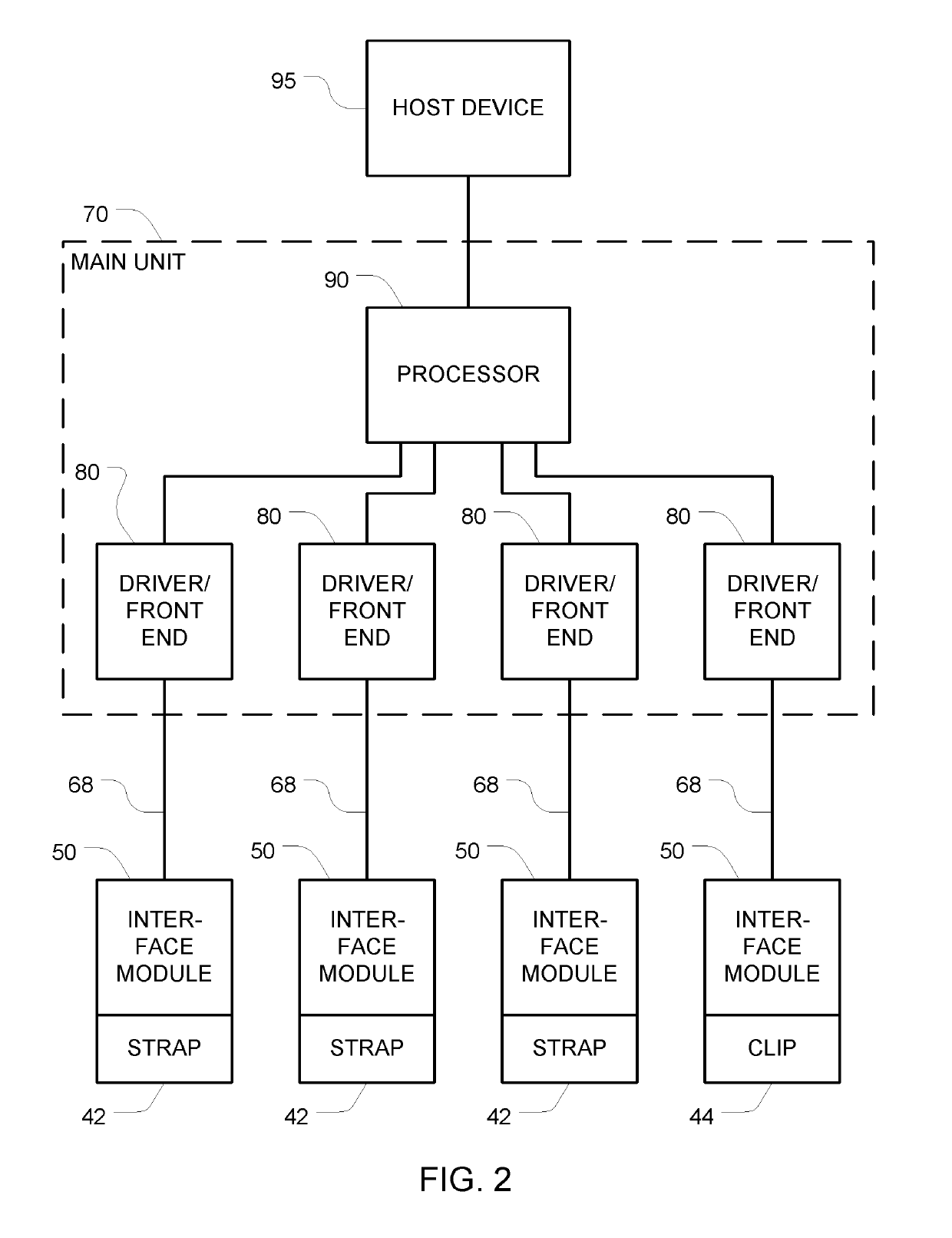Monitoring Treatment of Peripheral Artery Disease (PAD) Using Diffuse Optical Imaging
a peripheral artery disease and imaging technology, applied in the field of peripheral artery disease monitoring and imaging treatment using diffuse optical imaging, can solve the problems of gangrene, infection of wounds and tissue loss, and progressively shorter distances
- Summary
- Abstract
- Description
- Claims
- Application Information
AI Technical Summary
Benefits of technology
Problems solved by technology
Method used
Image
Examples
Embodiment Construction
[0068]SECTION 1: Monitoring Treatment of Peripheral Artery Disease (PAD) Using Diffuse Optical Imaging.
[0069]Vascular optical tomographic imaging (VOTI) is an emerging imaging modality capable of detecting hemoglobin concentrations in tissue. VOTI is non-invasive, non-ionizing and does not require contrast injection. In a clinical pilot study involving 40 subject that it has been shown that this technology promises to diagnose peripheral arterial disease (PAD) within lower extremities of diabetic patients with calcified arteries with high sensitivity and specificity.
[0070]The VOTI system is capable of quantifying the blood volume changes within the foot during the thigh cuff occlusion and outputting diagnostic parameters, such as change in hemoglobin concentration, enabling the assessment of foot perfusion. VOTI is also capable of providing the locations of under-perfused regions within the foot and evaluating the severity of arterial disease, even within diabetic patients with calc...
PUM
 Login to View More
Login to View More Abstract
Description
Claims
Application Information
 Login to View More
Login to View More - R&D
- Intellectual Property
- Life Sciences
- Materials
- Tech Scout
- Unparalleled Data Quality
- Higher Quality Content
- 60% Fewer Hallucinations
Browse by: Latest US Patents, China's latest patents, Technical Efficacy Thesaurus, Application Domain, Technology Topic, Popular Technical Reports.
© 2025 PatSnap. All rights reserved.Legal|Privacy policy|Modern Slavery Act Transparency Statement|Sitemap|About US| Contact US: help@patsnap.com



